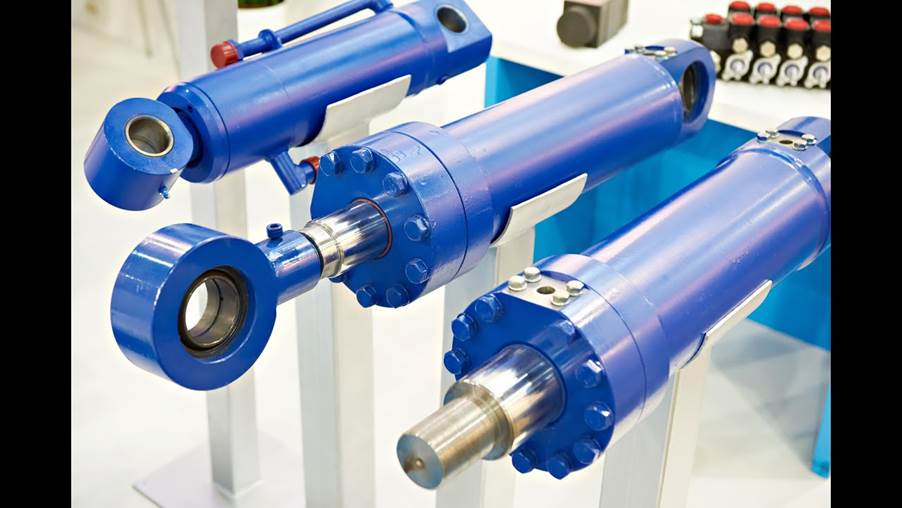The hydraulic cylinder market has been experiencing steady growth, driven by increasing demand across various industries, including construction, agriculture, material handling, and aerospace. Hydraulic cylinders play a crucial role in modern industrial applications, offering efficient power transmission, precise motion control, and high durability.
The global hydraulic cylinder market is projected to grow from US$14.8 billion in 2024 to US$21.5 billion by 2031, registering a CAGR of 5.5% over the forecast period from 2024 to 2031.
As industries continue to advance technologically, the demand for high-performance hydraulic systems is expected to rise, further fueling market expansion.
Market Overview and Growth Prospects
Global hydraulic cylinder market is expected to witness significant growth in the coming years, driven by industrial automation, the rise of smart manufacturing, and increasing investments in infrastructure development. The expanding construction sector, particularly in emerging economies, is one of the primary drivers of hydraulic cylinder adoption, as these components are essential for heavy machinery and earthmoving equipment.
In addition to construction, the agriculture sector is increasingly utilizing hydraulic cylinders in modern farming equipment, such as tractors, harvesters, and irrigation systems. The push toward mechanized farming to increase agricultural productivity is further contributing to the market’s expansion studied by Persistence Market Research. Similarly, the material handling and logistics industry has seen a rise in demand for hydraulic-powered forklifts, cranes, and conveyor systems, enhancing operational efficiency.
Key Innovations Transforming the Hydraulic Cylinder Market
Technological advancements are reshaping the hydraulic cylinder industry, leading to improved efficiency, precision, and reliability. Some of the most notable innovations include:
- Electro-Hydraulic Systems – The integration of electronic controls with hydraulic cylinders is enabling more precise motion control and automation. These electro-hydraulic systems are widely used in industrial robots, aerospace applications, and smart factories.
- Lightweight and High-Strength Materials – Manufacturers are increasingly using advanced materials such as aluminum and composite materials to design lightweight yet durable hydraulic cylinders. These innovations enhance energy efficiency while maintaining high load-bearing capacities.
- Smart Hydraulic Cylinders – The rise of Industry 4.0 has led to the development of smart hydraulic cylinders equipped with sensors and IoT (Internet of Things) technology. These cylinders provide real-time monitoring of pressure, temperature, and performance, allowing predictive maintenance and reducing downtime.
- Environmentally Friendly Hydraulic Fluids – With growing environmental concerns, manufacturers are focusing on the development of biodegradable hydraulic fluids that reduce pollution and improve sustainability. The adoption of eco-friendly solutions is gaining traction across various industries.
Growth Drivers Fueling Market Expansion
Several factors are contributing to the increasing demand for hydraulic cylinders worldwide. These include:
- Infrastructure Development – Governments across the globe are investing heavily in large-scale infrastructure projects, including roads, bridges, and smart cities. Hydraulic cylinders play a vital role in construction equipment, such as excavators, bulldozers, and cranes.
- Industrial Automation – The shift toward automation in manufacturing and industrial operations is boosting demand for hydraulic actuation systems, which offer precise control and efficiency.
- Agricultural Mechanization – The need for high-efficiency agricultural equipment to improve productivity is driving demand for hydraulic-powered machinery. The integration of hydraulic cylinders in farm equipment helps in reducing manual labor while increasing operational efficiency.
- Advancements in Material Handling – The expansion of e-commerce and warehousing has led to an increased demand for hydraulic systems in material handling equipment such as forklifts, conveyors, and automated guided vehicles (AGVs).
Challenges and Restraints Impacting Market Growth
Despite the promising outlook, the hydraulic cylinder market faces several challenges:
- High Maintenance Costs – Hydraulic cylinders require regular maintenance to ensure optimal performance, and unexpected failures can lead to costly downtimes.
- Competition from Alternative Technologies – The increasing adoption of electric actuators as an alternative to hydraulic systems in some applications is posing a challenge to market growth. Electric actuators offer lower maintenance and improved energy efficiency, particularly in precision applications.
- Environmental Concerns – Hydraulic fluid leaks and improper disposal can contribute to environmental pollution. Stricter regulations regarding fluid disposal and emissions are pushing manufacturers to develop eco-friendly alternatives.
Future Opportunities and Market Outlook
The future of the hydraulic cylinder market looks promising, with opportunities emerging from various sectors:
- Adoption of Smart Hydraulics – The integration of IoT-based hydraulic systems with predictive maintenance capabilities is expected to gain widespread adoption. These systems will help reduce downtime, improve efficiency, and enhance overall machine performance.
- Expansion in Renewable Energy Applications – Hydraulic cylinders are finding new applications in the renewable energy sector, particularly in wind turbine control systems and hydroelectric power plants. The push toward sustainable energy solutions will create growth opportunities for hydraulic cylinder manufacturers.
- Advancements in Aerospace and Defense – The aerospace industry is increasingly utilizing hydraulic systems in aircraft landing gears, control surfaces, and military-grade machinery. The rising demand for high-performance hydraulic solutions in defense applications is expected to drive market growth.
Conclusion
The hydraulic cylinder market is undergoing rapid transformation, driven by technological innovations, increasing industrial automation, and growing demand across multiple sectors. With the adoption of smart hydraulic systems, sustainable solutions, and advancements in material science, the market is poised for substantial growth in the coming years. Despite challenges such as high maintenance costs and environmental concerns, the industry is expected to thrive with the continued investment in infrastructure, manufacturing, and renewable energy.

